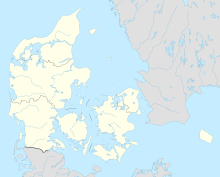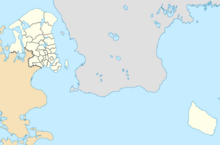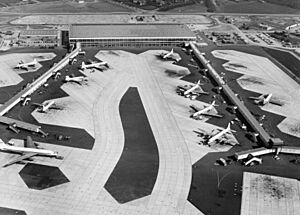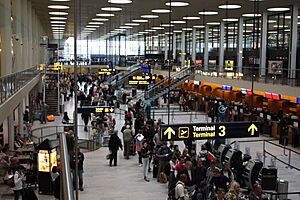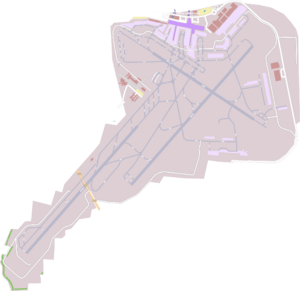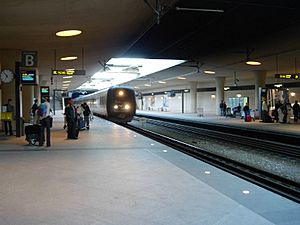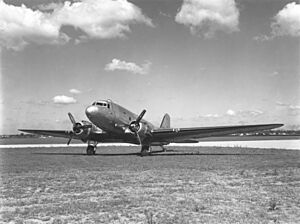Copenhagen Airport facts for kids
Quick facts for kids
Copenhagen Airport, Kastrup
Københavns Lufthavn, Kastrup
|
|||||||||||||||||||
|---|---|---|---|---|---|---|---|---|---|---|---|---|---|---|---|---|---|---|---|
 |
|||||||||||||||||||
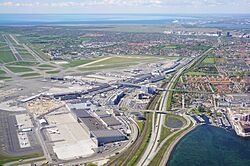 |
|||||||||||||||||||
| Summary | |||||||||||||||||||
| Airport type | Public | ||||||||||||||||||
| Owner/Operator | Københavns Lufthavne | ||||||||||||||||||
| Serves | Copenhagen metropolitan area (Denmark) Metropolitan Malmö (Sweden) |
||||||||||||||||||
| Location | Kastrup, Tårnby, Copenhagen, Denmark | ||||||||||||||||||
| Opened | 20 April 1925 | ||||||||||||||||||
| Hub for | |||||||||||||||||||
| Focus city for |
|
||||||||||||||||||
| Elevation AMSL | 5 m / 17 ft | ||||||||||||||||||
| Coordinates | 55°37′05″N 012°39′22″E / 55.61806°N 12.65611°E | ||||||||||||||||||
| Website | cph.dk | ||||||||||||||||||
| Map | |||||||||||||||||||
| Runway | |||||||||||||||||||
|
|||||||||||||||||||
| Statistics (2023) | |||||||||||||||||||
|
|||||||||||||||||||
|
Source: cph.dk
|
|||||||||||||||||||
Copenhagen Airport, Kastrup (also known as Københavns Lufthavn, Kastrup) is a major international airport. It serves the city of Copenhagen, Denmark, and also southern Sweden. In 2023, it was the biggest airport in the Nordic countries.
This airport is one of Europe's oldest international airports. It is also the busiest for international travel in Scandinavia. In 2019, it served over 30 million passengers.
The airport is located on the island of Amager. It is about 8 kilometers (5 miles) south of Copenhagen city center. It is also 24 kilometers (15 miles) west of Malmö, Sweden. The Øresund Bridge connects it to Malmö. Most of the airport is in Tårnby Municipality, with a small part in Dragør Municipality.
Copenhagen Airport is a main hub for Scandinavian Airlines. It is also a base for Sunclass Airlines and Norwegian Air Shuttle. Many airlines use this airport. It can handle 83 flights per hour. Most passengers here travel internationally. The airport is owned by Københavns Lufthavne. It also runs Roskilde Airport.
The airport was first called Kastrup Airport. This was after the small town of Kastrup. Its full name is still Copenhagen Airport, Kastrup. This helps tell it apart from Roskilde Airport.
Contents
History of Copenhagen Airport
The airport first opened on April 20, 1925. It was one of the world's first civil airports. It had a large wooden terminal and a few hangars. There was also a place for seaplanes to land. The runways were just grassy fields. Sheep helped keep the grass short! They were moved away for planes to take off and land.
From 1932 to 1939, flights grew a lot. Takeoffs and landings went from 6,000 to 50,000. Passenger numbers reached 72,000. A new terminal was built between 1936 and 1939. It was a great example of Nordic functionalism. Vilhelm Lauritzen designed it. He was a pioneer in airport design.
During World War II, the airport was mostly closed for regular flights. Only some flights to Sweden, Germany, and Austria continued. In the summer of 1941, the first hard runway opened. It was 1,400 meters (4,600 feet) long. After the war ended in 1945, Copenhagen had a very modern airport. It was not damaged during the war.
On August 1, 1947, Scandinavian Airlines (SAS) started. This was important for Copenhagen Airport. Copenhagen became SAS's main hub. Air traffic quickly increased. In 1948, Copenhagen Airport was the third largest in Europe. It had 150 daily takeoffs and almost 300,000 passengers. The airport kept growing. Terminals were expanded and new hangars were built.
In 1954, SAS started the world's first trans-polar route. This was a flight to Los Angeles. Copenhagen became a popular stop for Hollywood stars. The airport also handled 11,000 tonnes of cargo each year. By 1956, the airport served 1 million passengers annually. It also won an award for being the world's best airport. The runways were made longer and got new technology.
On May 10, 1960, a new terminal opened (now Terminal 2). Daily jet flights increased to 28. But traffic kept growing even more. The new terminal soon became too small. In 1969, a big expansion started. Domestic flights moved to a new terminal (part of Terminal 1). The international terminal got a new pier (C). A separate arrivals hall was also added. A new control tower was built. New runways allowed planes to take off and land at the same time. By 1972, the airport had over 180,000 takeoffs and landings. It also had more than eight million passengers.
Traffic kept growing in the 1970s. There were plans for a new, very large airport on Saltholm island. But in 1980, the Danish parliament decided to expand Copenhagen Airport instead. This was cheaper. Also, new planes were quieter, so a new airport wasn't as necessary for noise reasons. In 1973, the airport handled 8 million passengers. A third long runway opened. This greatly increased the airport's capacity.
The airport expansion began in 1982. The goal was to make it a favorite airport for transit passengers. They wanted it to be a relaxing place. It would have beautiful architecture and Scandinavian design. There would be many shops, restaurants, and other fun things. A new cargo terminal was built in the eastern part of the airport.
From 1984 to 2000, SAS ran a boat service to Malmö, Sweden. Passengers could check in their luggage in Malmö. This service stopped when the Øresund Bridge opened in 2000.
Many important buildings were finished in 1998. These included a pier connecting terminals. There was also a new arrivals hall and baggage system. An underground train station and parking opened. Above it was the large, delta-shaped Terminal 3. It could handle 17 million passengers. The first part of Pier D was finished in 1999.
On July 1, 2000, the Øresund Bridge opened. It connects Denmark and Sweden by road and train. In 2001, a five-star Hilton hotel opened at the airport. In 2006, Copenhagen Airport had over 20 million passengers for the first time. In October 2007, a metro station opened. It connected the airport to the Copenhagen Metro. A new control tower opened in 2008. In 2010, a new terminal for low-cost airlines, CPH Go, opened. By 2013, the airport had a new record of over 24 million passengers. Plans were made to increase capacity to 40 million passengers. It reached 30 million in 2018.
In late 2015, Copenhagen Airport became the first in Scandinavia to have regular Airbus A380 flights. Emirates airline started using this large plane for its Copenhagen route.
Due to the COVID-19 pandemic, passenger numbers dropped a lot in 2020. There were only 7.5 million passengers that year. Most of these were in January and February before restrictions started.
Airport Facilities
Copenhagen Airport has two main terminals for checking in: Terminal 2 and Terminal 3. All flights use these terminals. They share a common area for passengers after security. This area also has customs and baggage claim. The security check is between Terminal 2 and Terminal 3.
The passenger area is divided into piers: A, B, C, D, E, and F. Piers A and B are for flights within the Schengen area (most of Europe). Pier C is mostly for flights outside Schengen. Pier D is mostly for flights inside Schengen. The newest section, Pier F (formerly CPH Go), opened in 2010 for low-cost airlines. Airlines like EasyJet, Transavia, and Ryanair use it. There have been talks about a new Terminal 4, but the airport plans to expand current facilities instead. Copenhagen Airport aims for easy transfers for passengers.
Before March 2015, domestic flights used Terminal 1. Now, all flights leave from Terminals 2 and 3. Pier C was expanded to handle the large Airbus A380 plane. Pier E was built between 2016 and 2019. Scandinavian Airlines moved most of its long-haul flights from Pier C to E.
Runways
The airport has runways that point towards the Øresund strait. This means planes mostly fly over water when taking off or landing. This helps reduce noise over nearby homes. The airport is also low to the ground. There are no hills or tall buildings in the flight paths.
For foggy weather, runway 22L has a special system. It's called an ILS category III C. This allows modern planes to land even when visibility is very low. Runway 04R/22L was made wider to fit the Airbus A380.
Other Airport Features
The original terminal building from the 1920s is now a VIP terminal. It was moved about 2 kilometers (1.2 miles) in the 1990s.
In 2015, Boeing opened a maintenance and repair facility at the airport. This helps them quickly check planes that fly through Copenhagen.
Getting Around the Airport
Special airport buses run every 15 minutes. They connect all terminals and parking areas. There are 11 bus stops. This transport is free for everyone. At night, the buses run every 20 minutes.
Train Services
The airport has a train station located under the terminals. It is on the Øresund Line.
- DSB trains serve this station. These are part of the Øresundståg service. They run locally between Copenhagen city center and Helsingør. They also go to cities in southern Sweden like Malmö and Gothenburg.
- DSB also has InterCity and InterCityExpress trains here. These go to Danish cities like Esbjerg and Aarhus.
- Swedish SJ runs high-speed trains from Copenhagen Airport. These go to Stockholm and Gothenburg.
Metro Services
Line M2 of the Copenhagen Metro connects the airport to the city center. The trip takes about 15 minutes. The Metro station is two floors above the underground train station. It runs on elevated tracks for a few stops. Metro trains run very often. During busy times, they come every four minutes. At night, they come every 15 to 20 minutes. The Metro goes to Kongens Nytorv station. From there, you can connect to the new City Circle line.
Road Access
The E20 motorway passes right by the airport. The E20 uses the Øresund Bridge to Sweden. The airport has 8,600 parking spaces.
Several buses also stop at the airport. These include Movia buses 5C, 35, 36, and Gråhundbus line 999. Bus 888, an express bus to Jutland, also stops here. There are also long-distance buses to Sweden and Norway.
Airport Incidents
- On January 26, 1947, a Douglas Dakota (DC-3) plane from KLM crashed after taking off from Copenhagen. Everyone on board was lost. The plane had stopped in Copenhagen on its way to Stockholm. Soon after takeoff, it went up about 50 meters (150 feet), then lost power and fell nose-first. It was found that a safety lock on the elevator (a part of the tail) was still in place. The pilot did not check it before takeoff.
- On November 17, 1957, a Vickers Viscount plane from British European Airways crashed near Ballerup. This happened as it was approaching Copenhagen Airport. Three of its engines failed. This was caused by a problem with the plane's anti-icing system.
- On August 28, 1971, a Malév Ilyushin Il-18 plane crashed into the sea. This happened during its landing approach. The main reason for the accident was a microburst. This is a sudden, strong downdraft of air. Most people on board were lost, but two passengers survived.
- On July 6, 2022, a British Airways Airbus A320 plane caught fire while landing. Airport firefighters quickly put out the fire. People in the terminal buildings were able to record what happened.
See also
 In Spanish: Aeropuerto de Copenhague-Kastrup para niños
In Spanish: Aeropuerto de Copenhague-Kastrup para niños
- List of airports in Denmark
- List of the busiest airports in the Nordic countries
- List of the busiest airports in the European Union


